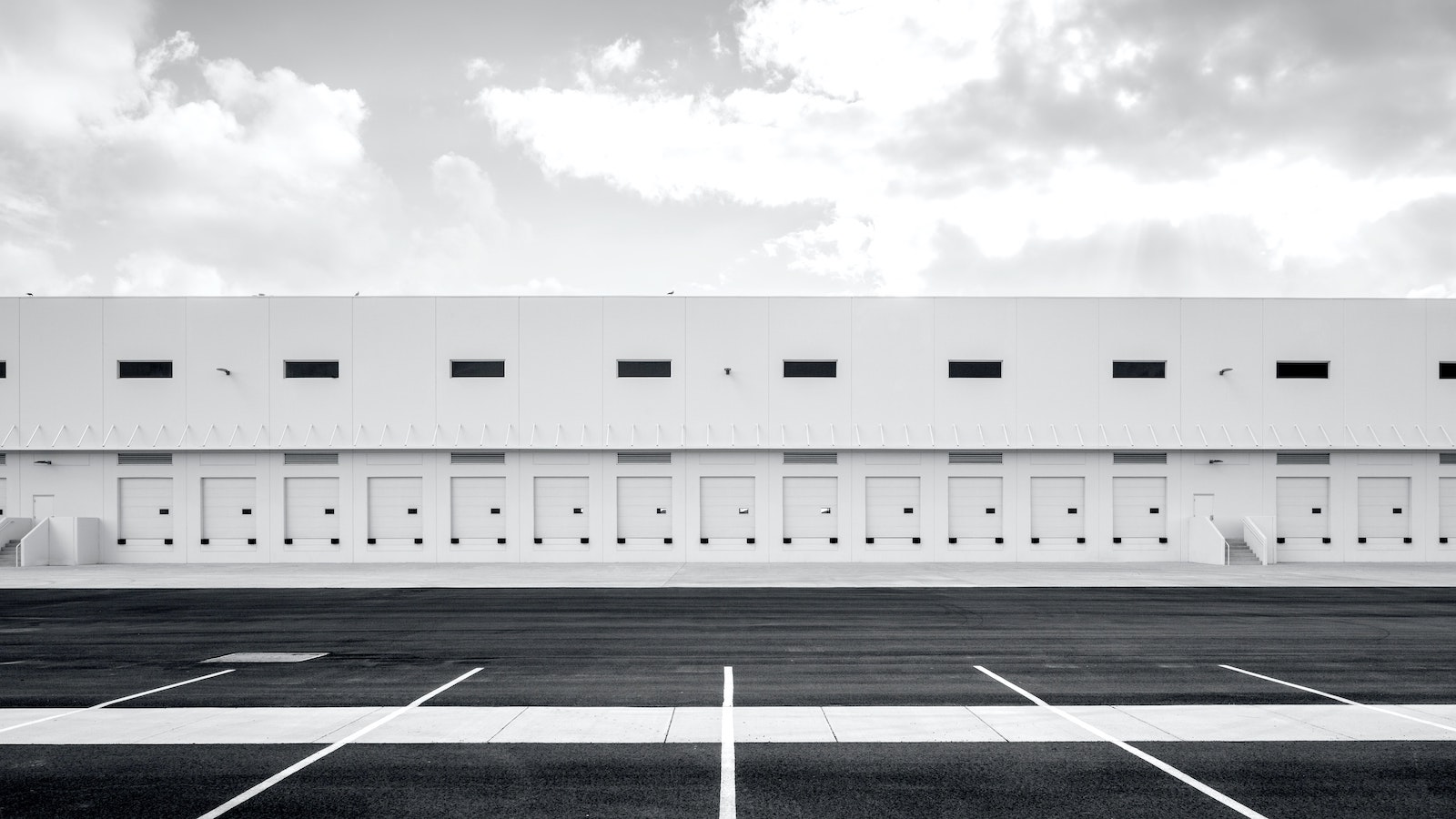Table of Contents
** Minutes
COVID’s impact on retail logistics
What are the functions of retail logistics?
3 tips for improving your retail logistics management
Having furniture delivered to your home. Curbside pickup. Ordering clothes online. These are all forms of retail logistics.
Today’s consumers expect a fast and effortless experience with your brand. This involves meeting them where they are, and giving them both the shopping and transportation options they want.
From managing inventory flow to ensuring that customers receive shipments on time, retail logistics streamlines the different stages of your ecommerce supply chain to keep your business running smoothly.
As ecommerce sales continue to grow throughout 2021, it’s time for online retailer to rethink their retail logistics strategy to meet customer demands, lower shipping costs, offer faster shipping options, and improve the overall customer experience.
In this article, you will learn the ins and outs of retail logistics and tips on how to improve your logistics management process.
What are retail logistics?
Retail logistics involve all the inbound and outbound processes that result in the flow of finished goods from a business to the end user. The optimisation of a solid retail logistics strategy is key to operating a sustainable direct-to-consumer (DTC) retail business.
Stages of the retail logistics process include warehouse receiving, inventory management, fulfilment, and shipping. Every stage of the logistics process must be optimised in order to meet customer expectations around fast, affordable delivery.
This means a retail logistics operation often requires both labour (both warehouse workers and upper-level management roles, such as a logistics director) and supply chain technology — which can increase logistics costs significantly. In many cases, DTC brands will outsource retail logistics to a third-party to save on time and costs.
COVID’s impact on retail logistics
The way retailers handle logistics has changed dramatically as a result of the pandemic.
Business owners now face challenges like supply and demand disruptions, inventory delays, global lockdowns, changing trade policies, and evolving consumer shopping behaviors. The need to build flexibility into your supply chain is more important than ever.
In 2020, global retail sales exceeded $23 trillion, and experts predict ecommerce demand to continue expanding. One of the biggest challenges for growing ecommerce businesses today is managing increased order volume.
Partnering with the right 3PL takes the challenges that come with managing retail logistics off your plate and puts them into the hands of experts.
Investing in retail logistics expertise can help build supply chain resilience by delegating logistics, so you can focus more on increasing sales, product development, market research, and customer service initiatives.
What are the functions of retail logistics?
On the surface, fulfilling orders may seem straightforward. You pick items, package them up, and ship orders to their destination. Easy, right?
The reality is that there is so much more involved in achieving an optimised retail supply chain.
As online shoppers expect more – free returns, free and fast shipping, even share-worthy unboxing moments – retail logistics has turned to a technology-enabled approach that is focused on speed, location, and automation.
Procuring inventory
Procurement refers to sourcing merchandise on time to meet demand, and it affects the ways your online retail business activities (like sales, inventory management, and distribution) can be performed.
Having insight into what’s going on during the procurement process can help you find ways to build a more agile supply chain.
For instance, instead of viewing procurement as a separate part of your supply chain logistics, think of it as the first (and the most critical) stage of logistics management.
Inefficient procurement that is not aligned with your retail logistics strategy can lead to reduce efficiency, delays, and less inventory visibility.
For example, you may have trouble procuring inventory fast enough to meet demand and fulfil orders as soon as they come in. This can cause stockouts and backorders, which can lead to lost sales and lower customer satisfaction.
Less visibility over the procurement phase can also result in missed opportunities to optimise.
Receiving & processing inventory
To fulfil orders, first your products must be received and processed. This is the unloading and official “checking in” of incoming ecommerce inventory, followed by its proper documentation and storage.
Inventory receiving and processing is so important. Not only does it enable efficiency and speed up the fulfilment process, but it also ensures that what is being received matches what was ordered.
Lacking clear procedures for things like unloading, receiving, or assigning SKUs makes it all too easy to wind up with loss (which can cause inventory shrinkage), impacting both your customers and your bottom line.
Distributing inventory
“Distributed inventory” is an inventory allocation method that disperses inventory across multiple warehouses or fulfilment centres instead of just one. The idea behind this system is simple: it puts your products closer to your customers, making it one of the most effective ways to shorten delivery times while reducing shipping costs.
Because shipping zones affect the price of fulfilling retail orders, the less distance a package must travel, the lower the cost for customers (think about an Uber or Lyft ride, where the farther the destination, the more expensive it will be).
In an economy that relies on fast fulfilment, distributing inventory among numerous retail warehouses can take your business to the next level by unlocking the ability to offer affordable, 2-day shipping — a perk many consumers expect thanks to retailers like Amazon.
Since many fast-growing brands don’t have the time or resources to manage multiple warehouses, they outsource fulfilment to a 3PL like ShipBob, which operates a large network of fulfilment centre locations.
Order fulfilment
Don’t underestimate customer expectations on fast, affordable delivery. Having a cost-effective and efficient order fulfilment strategy in place is crucial.
Once your customer clicks “Submit Order,” a number of synchronized processes take place, which ensures customer information is validated, and the right products are picked and packaged as soon as possible. It’s known as the order-to-cash (O2C) process.
During the O2C cycle, some inventory management and accounting tasks must occur, such as locating items in the available inventory to fulfil the order and receiving customer payments.
A healthy O2C cycle also requires an order management system to track orders and record historical order data, which is later used to analyse O2C performance.
If you partner with a 3PL like ShipBob, the order processing and fulfilment process is automated. Once your online store is connected to ShipBob’s fulfilment software, orders are sent to the nearest fulfilment centre to the shipping destination.
From there, a picker at the fulfilment centre receives a list of the items, quantities, and storage locations to identify and retrieve the items. Then, the order is securely packed and shipped through the most cost-effective route available.
“Our fulfilment is on autopilot. ShipBob saves us so much effort, and the opportunity cost savings has been substantial. I’ve been spending my time on business development and strategic partnerships, reaching out to retailers to see if they want our product on their shelves.
Rather than us packing boxes and going to FedEx, or paying additional fees to another third-party, having ShipBob do it all is awesome.”
Yannick Crespo, Co-Founder & President of Pot d’Huile
Tracking inventory & orders
Throughout the entire ecommerce supply chain, it’s important to have systems in place to manage inventory in real-time.
Without real-time inventory management, it’s a challenge to maintain optimal inventory levels and know when it’s time to replenish inventory to meet demand, without overstocking and increasing holding costs.
Along with inventory tracking, you will also need to track orders. Digital order tracking allows you to monitor orders and shipments in real time, as well as provide tracking information for your customers.
For instance, with ShipBob’s technology that integrates with your ecommerce platform(s), you can:
- Automatically send a confirmation email and share the tracking number and tracking information with each customer.
- View the order status as it moves from processing to shipping (and any step in between) in real-time.
- Filter orders by status and search for specific orders.
- Edit shipping details in situations where your customer made a mistake (e.g., entered the wrong address) up to the point when the order is picked.
“In terms of tracking inventory, we use ShipBob for everything — to be able to track each bottle of perfume, what we have left, and what we’ve shipped, while getting a lot more information on each order. The analytics are super helpful.
We download Excel files from the ShipBob dashboard all the time and use them to analyse everything from cancelations, to examining order weights, to checking on whether ShipBob is shipping orders on time. Even the way their warehouse receiving orders (WROs) work for sending inventory is very straightforward.”
Ines Guien, Vice President of Operations at Dossier
Shipping
As soon as an order is picked and packed, it is then shipped. If you have multiple warehouses within your logistics network, the shipment is sent out from the nearest location to the destination.
Ecommerce shipping involves preparing orders to be transported to the end user in the most reliable, cost-effective way possible.
Developing a strategic shipping strategy is crucial, as it helps to maintain customer loyalty and customer satisfaction. Oftentimes, a winning shipping strategy is a combination of different shipping methods and partnering with the right mix of couriers.
If done right, shipping incentives are also used as marketing tool, such as 2-day shipping and free shipping. To help offset the cost of shipping (and free shipping), brands will use product bundles, minimum spend thresholds, and partner with a 3PL that takes care of shipping, as well as offer negotiated bulk shipping rates then pass the savings on to you and your customers.
“ShipBob has been a great ally as they have fulfilment centres all over the US, facilitating a 2-3 day delivery time for any customer in the US.”
Andrea Lisbona, Founder & CEO of Touchland
Returns management
If not managed correctly, returns can be a large cost for ecommerce businesses. In 2019, 48% of customers returned products they purchased online, resulting in billions in losses.
The returns management process can involve additional receiving, packing, assessment, re-processing, and even replacements, which can quickly increase costs when not managed properly.
Fortunately, returns can be looked as an opportunity to further enhance the customer experience. By training your customer service team to initiate returns quickly while also asking for feedback is a great way to improve products by listening to what your customers have to say.
Overall, incorporating retail logistics solutions that make returns more efficient can have a huge impact on your business growth.
“About a year and a half after building out our business, we figured it was time to optimise some of our processes, including returns. The ability to work with one of the co-founders of ShipBob to launch a new, custom returns process was awesome.
Returns were taking a lot of time and resources to process on our end, but ShipBob was super helpful and critical in creating a solution for us.”
Nikolai Paloni, Co-Founder of Ombraz Sunglasses
3 tips for improving your retail logistics management
No matter what you sell — ecommerce is incredibly competitive. To meet customer expectations, traditional logistics systems aren’t enough to maintain efficiency and reduce labour costs.
To establish a strong retail logistics operation, you need the right partners and technology on your side.
Transforming to digital logistics
To optimise your supply chain to stay competitive and meet demand, it requires the ability to transform retail logistics into the digital world.
Digital supply chain transformation takes traditional supply chain management processes and optimises them with the latest logistics innovations, such as automation, data and analytics, robotics, and AI learning.
The goal is to create a more efficient supply chain that is fast, resilient, and more sustainable.
For instance, digital inventory systems can support multichannel retailing, allowing brands to expand across channels and still have full visibility of their supply chain.
Integrating a digital inventory system along with a warehouse automation system or 3PL’s software provides accurate order accuracy, faster fulfilment, and the ability to track inventory across distribution centres.


“We utilise ShipBob’s Inventory API, which allows us to programmatically retrieve real-time data on how many units of each product are currently stored at ShipBob’s warehouses.
We currently use this API to generate custom reports to tie this inventory data into our accounting platforms.”
Outsourcing to logistics experts
As an online brand grows, it’s not uncommon for online retailers to quickly turn to modern logistics partners for several reasons:
- As a brand grows, in-house fulfilment becomes time-consuming and costly.
- Brands eventually run out of space or don’t have enough labour to meet demand.
- Business owners and their teams don’t have enough time to focus on direct-revenue initiatives.
Outsourcing retail logistics to third-parties that prioritize reducing costs and speeding up productivity can give your business a powerful competitive advantage.
Logistics experts like ShipBob provide the infrastructure, expertise, and technology (including advanced data and analytics), so you’re given everything you need to maintain a strong supply chain while also taking back time to focus on growing your business.
“ShipBob feels like a partner. I’ve been passed around the 3PL world, and I’m glad to put roots down with ShipBob.
I can’t stress enough how much easier my life has gotten since. Getting to share product feedback and future ideas with ShipBob has been so refreshing and reassuring.
I’ve worked with three other 3PLs, and no other one has taken this approach. ShipBob implements changes so quickly and doesn’t make empty promises. I was just a name and number to my past 3PLs.
ShipBob offers fairness and equality across all brands. It feels like we’re working with a company that’s on the same path as us with perpetual growth.”
Wes Brown, Head of Operations at Black Claw LLC
Consolidating your tech stack
Online retailers can grow best when their operations are automated to work at optimum efficiency. Better integration of your retail logistics tech stack can keep your business running smoothly.
ShipBob partners with leading end-to-end ecommerce solutions, from marketing tools to returns platforms, to create a custom retail logistics solution that fits your brand.


For a more custom solution, ShipBob’s Developer API supports merchants with high-tech operations that require flexibility.
“ShipBob’s API lets us build custom logic since we ship personalised products with lots of variations in the kits we send. We can write a few lines of code instead of creating a manual kit for each possible order combination as we’d have to do in a tool like Shopify.”
Oded Harth, CEO & Co-Founder of MDacne
Unlock growth by outsourcing to ShipBob
ShipBob is a technology-driven 3PL that operates an international fulfilment network with premium retail fulfilment technology. ShipBob merges logistics technology with leading fulfilment processes to improve the customer experience and your bottom line.
It’s easy to send your inventory directly to our fulfilment centres, where we’ll pack then ship each order from the fulfilment centre that’s closest to the shipping destination as soon as it’s placed by your customer.
ShipBob helps fulfil not only website orders but also has a B2B Fulfilment Suite and EDI capabilities, enabling merchants to sell throughout the entire B2B ecosystem, powering retail dropshipping (fulfilling orders placed on big box retailers’ websites) and wholesale shipping (including brick-and-mortar stores), which can connect with all the major retailers.
With ShipBob, you get access to:
- Distributed inventory solutions, stored in several of our fulfilment centres so you don’t have to manage your own warehouse(s)
- The ability to expand into global markets with ease
- Integrated technology and analytics to track inventory and orders
- Ecommerce logistics expertise needed to optimise your supply chain
- Bulk carrier discounts and the ability to reduce your delivery times and costs
- The ability to offer fast and affordable shipping for your customers
To learn more about how ShipBob can help optimise your retail logistics, contact our team by clicking the button below.
Retail logistics FAQs
Here are answers to common questions about retail logistics.
Why are logistics important in retail?
Retail logistics are all about ensuring that your supply chain is efficiently managed so your customers get what they want, when they want it. It involves product procurement, inventory receiving, fulfilment, and shipping. Each stage of the retail logistics process requires a strategy and the necessary systems in place to stay optimised and keep your supply chain running.
How do I improve retail logistics?
To optimise your supply chain to stay competitive and meet demand, it requires the ability to transform retail logistics into the digital world. Digital supply chain tools take traditional supply chain management processes and optimises them with the latest innovations, such as automation, data and analytics, robotics, and AI learning. The goal is to create a more efficient supply chain that is fast, resilient, and more sustainable.
Does ShipBob help with retail logistics?
Yes! ShipBob is a technology-driven 3PL that operates an international fulfilment network to store inventory and pick, pack, and ship orders across channels. ShipBob combines logistics technology and automation with leading fulfilment processes to improve the customer experience and optimise shipping.



